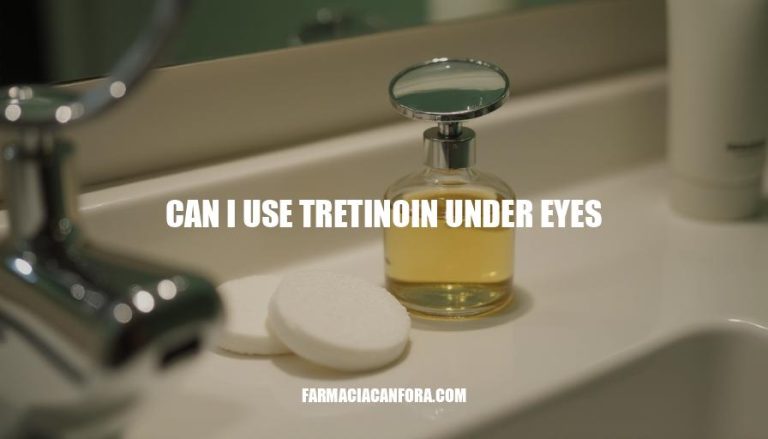


Tretinoin is a powerful ingredient that helps skin cells turn over faster. It makes skin look smoother and reduces signs of aging. Doctors often prescribe it for acne, dark spots, and wrinkles.
The skin under our eyes is thin and can get dry or irritated easily.
Tretinoin is strong, so we need to be careful when using it there. People want to know if it’s safe to use tretinoin under their eyes to reduce fine lines, dark circles, or crepey skin.
To make the most of tretinoin and keep our skin healthy, we need to understand how to use it correctly under the eyes.
Tretinoin, a derivative of vitamin A, is a potent topical medication widely used for treating various skin concerns, including acne, wrinkles, and hyperpigmentation. However, its application under the eyes requires careful consideration due to the delicate nature of the skin in this area.
Potential Risks and Safety Considerations:
Skin Irritation: The under-eye skin is thin and sensitive, making it more prone to redness, peeling, and irritation when exposed to tretinoin.
Eye Injury: Accidental contact with the eyes can lead to irritation, redness, and even blurred vision.
Sun Sensitivity: Tretinoin increases the skin’s sensitivity to UV rays, heightening the risk of sun damage.
Dryness and Flaking: The medication can cause excessive dryness and flaking, which may be particularly uncomfortable in the under-eye area.
Guidance for Application:
Start with a Low Concentration: Begin with a lower strength (e.g., 0.01% or 0.025%) to minimize irritation.
Patch Test: Apply a small amount to a less sensitive area to test for adverse reactions before using it under the eyes.
Use a Pea-Sized Amount: A tiny amount is sufficient for the entire face, including the under-eye area.
Avoid Direct Contact with Eyes: Ensure the product does not come into direct contact with the eyes.
Layer with Moisturizer: Apply a hydrating moisturizer after tretinoin to reduce dryness and peeling.
Nighttime Application: Use tretinoin at night to avoid sun exposure immediately after application.
Sun Protection: Apply sunscreen during the day to protect the skin from UV damage.
Professional Consultation:
Consulting a dermatologist is crucial before incorporating tretinoin into your skincare routine, especially for sensitive areas like under the eyes. A professional can recommend the appropriate concentration, frequency, and complementary products to ensure safe and effective use.
1cityskinclinic.com2miiskin.com
Using tretinoin under the eyes requires careful consideration due to the delicate nature of the skin in this area.
Potential risks and safety considerations include skin irritation, eye injury, sun sensitivity, and dryness/flaking.
To minimize these risks, start with a low concentration, patch test, use a pea-sized amount, avoid direct contact with eyes, layer with moisturizer, apply at night, and follow up with sunscreen during the day.
It is essential to consult a dermatologist before incorporating tretinoin into your skincare routine, especially for sensitive areas like under the eyes. They can recommend the appropriate concentration, frequency, and complementary products to ensure safe and effective use.